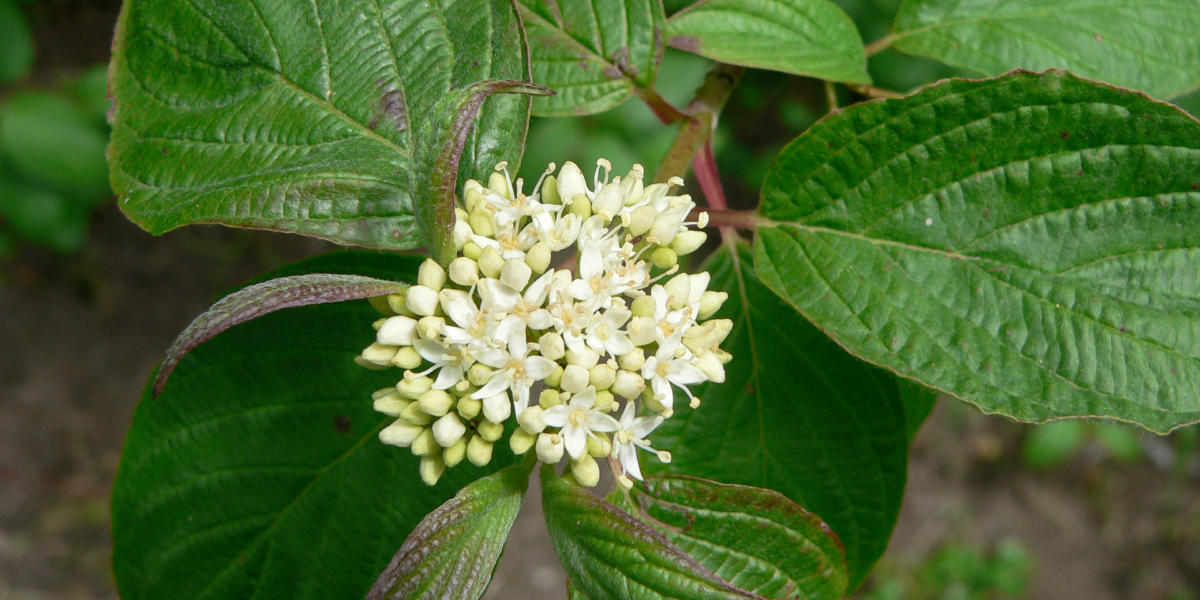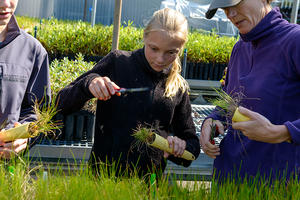
Endangered
No
Description
The bright red stems of dogwood are unmistakable, especially in the winter, against a foggy sky...
There is another “redwood” in Redwood Creek: Cornus sericea has red stems that are revealed during the autumnal leaf drop. Like all members of the Dogwood family native to North America, Cornus sericea have deciduous, opposite leaves. Flowers of this family are very small. Each has a four-lobed calyx, four separate petals, and four stamens. In the case of C. sericea, the flowers are white, born closely together on cymes, and open in May to June. The ovary is inferior, and the fruit is fleshy and two-seeded. The small four-petaled flowers, and often brightly colored stems and leaves, have made this genus an important landscape plant.
Likewise, the high habitat value and ability to flourish in disturbed areas gives the dogwood importance in riparian (streamside) restoration. American dogwood is used for food and cover by black-tailed deer, songbirds, quail, ducks, crows, mice, and many other animals. It is excellent at stabilizing soil, easy to establish, and grows rapidly. Like many other riparian trees and shrubs, it provides cover and shade that cools water temperatures in streams for salmonids.
And, a question to ponder: why is dogwood called dogwood? After a little internet sleuthing, we found a less-than-plausible explanation: the plant was originally ‘dagwood,’ after the skewers—‘dags’ (like daggers)—that were made of the wood, but the stems were used to wash dogs, hence the name dogwood. Hmm... while the etymology of dogwood remains in question, it can still be enjoyed for its beauty and importance in our riparian ecosystems.

